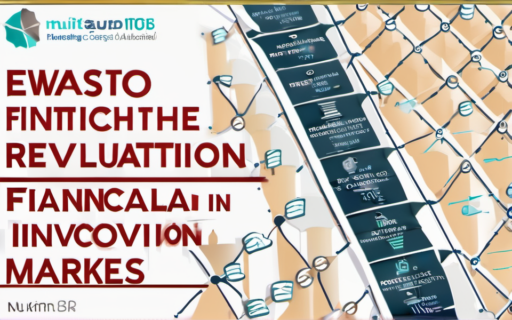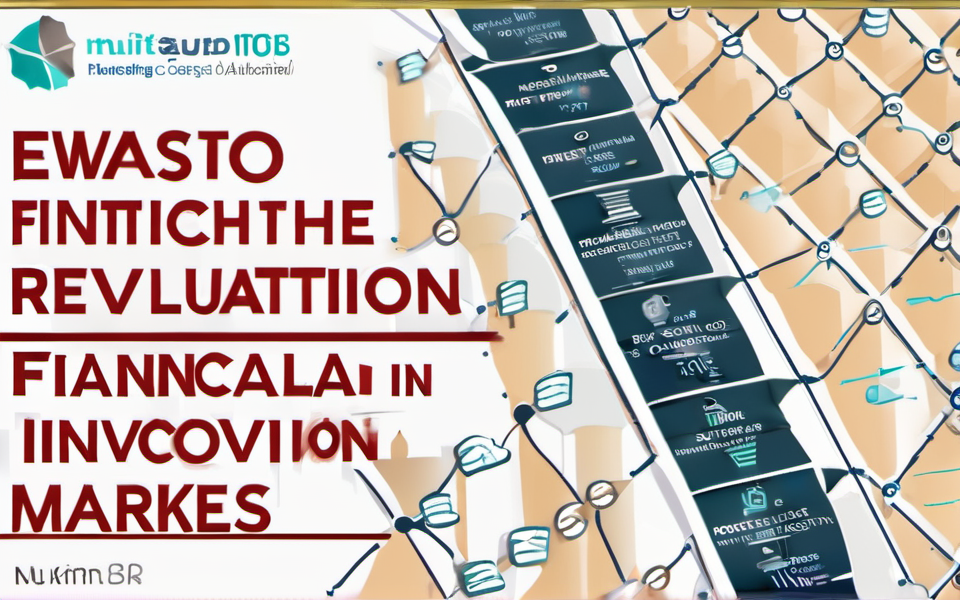You Think You Know Finance? Think Again!
The financial world is undergoing a seismic shift, a revolution driven by cutting-edge technology. This isn’t just about online banking or mobile payments anymore; it’s about reimagining the entire financial ecosystem. Fintech has arrived, bringing with it an unprecedented wave of innovation and disrupting every corner of financial markets. But with all this change, one critical question looms large: How can we ensure the future of finance is both secure and accessible? This is where the complex and crucial interplay between regulation and innovation comes into play. Buckle up, because we’re diving deep into the exciting, sometimes chaotic, world of fintech regulation and the thrilling future it promises.
Navigating the Regulatory Landscape
Imagine a world where anyone, regardless of their financial background, can invest in the stock market with ease. Or where small businesses can access capital with just a few clicks, eliminating the hurdles of traditional lending. This is the promise of fintech, but achieving it requires navigating a labyrinth of regulations.
Navigating the Complex World of FinTech Regulation: Balancing Innovation with Safety
The financial services industry has long been governed by strict rules, designed to protect consumers and maintain stability. Fintech is challenging those traditional norms, pushing the boundaries of how we interact with money. Regulatory bodies around the world are grappling with this new reality, trying to strike a delicate balance between encouraging innovation and ensuring the financial system remains safe and secure.
The Key Players in the FinTech Regulatory Landscape
It’s a complex dance involving a multitude of actors, including:
- National regulators: Think Central Banks like the Federal Reserve in the US or the Bank of England in the UK. They’re responsible for overseeing the financial system as a whole and ensuring stability across the board.
- Securities regulators: Agencies like the Securities and Exchange Commission (SEC) in the US are responsible for regulation and supervision of financial markets and investor protection. They’re keeping a watchful eye on things like crowdfunding and cryptocurrency.
- International organizations: Bodies like the Financial Stability Board (FSB) work across countries to coordinate regulation and ensure global financial stability.
- Industry associations: Organizations representing fintech companies themselves are advocating for clear and flexible regulation.
Table: Key FinTech Regulators & Their Focus Areas
| Regulator | Focus Areas |
| —————— | ————————————————————————————— |
| Central Banks | Overall financial stability, macroeconomic implications of fintech |
| Securities Regulators | Capital markets, investor protection, securitization (including cryptocurrencies) |
| International Organizations | Global financial stability, cross-border fintech regulation |
The Promise of FinTech: Democratizing Access to Financial Services
Beyond the complexities of regulation, lies the truly exciting potential of fintech. We’re witnessing a paradigm shift, moving away from the rigid and often exclusive structures of traditional finance toward a more inclusive and accessible future.
Unlocking the Power of Financial Inclusion: Making Finance Accessible for All
One of the most powerful applications of fintech is in expanding financial inclusion. This means providing access to essential financial services, like savings, loans, and insurance, to people and communities traditionally excluded from the system.
Here are some key areas where fintech is driving financial inclusion:
- Microfinance: Mobile platforms make it easier for small entrepreneurs in developing countries to access loans and grow their businesses.
- Payments: Digital wallets and mobile payments empower individuals to send and receive money seamlessly without needing a bank account.
- Financial literacy: Educational apps and online resources make it simpler for people to learn about financial planning and make informed financial decisions.
The Rise of Alternative Finance: Challenging Traditional Lending Practices
Fintech is shaking up traditional lending models as well. Instead of relying solely on banks for credit, borrowers have access to alternative financing options. Peer-to-peer (P2P) lending connects individual lenders and borrowers directly, bypassing the middleman. Crowdfunding empowers businesses to raise capital directly from the public, often for innovative projects that traditional lenders might overlook.
Building a Sustainable Future for FinTech: Regulation & Innovation Working Hand-in-Hand
Fintech, for all its promise, isn’t without its challenges. There’s a delicate dance to ensure data security, privacy, and consumer protection while fostering the innovation that drives progress.
Balancing Risk & Innovation: The Importance of Data Security and Consumer Protection
As fintech platforms handle increasingly sensitive financial data, there’s a heightened focus on ensuring cybersecurity and data protection. Regulations like the European Union’s General Data Protection Regulation (GDPR) are setting new global standards, emphasizing individual rights to control personal information.
Here’s how fintech can protect user data and maintain trust:
- Strong Encryption: Encrypting sensitive data is a fundamental building block of security, ensuring it can’t be accessed by unauthorized parties.
- Multi-Factor Authentication: Requiring multiple forms of authentication for account access provides an extra layer of security against unauthorized entry.
- Regular Security Audits: Continuously reviewing systems for vulnerabilities and updating security protocols is vital in today’s rapidly evolving threat landscape.
A Future Rooted in Collaboration: Working Together to Shape FinTech’s Success
Moving forward, a collaborative approach between regulators, industry leaders, and academics is essential for shaping the future of fintech. Here are some critical areas where collaboration can lead to greater success:
- Promoting transparency: Creating clear guidelines on data use, algorithmic fairness, and risk assessment for fintech platforms helps build public trust.
- Encouraging responsible innovation: Supporting responsible development and deployment of innovative fintech technologies reduces risks and ensures long-term sustainability.
- Promoting financial literacy: Educating consumers about fintech and its impact, as well as financial planning, is essential for empowering them to make informed decisions.
Key Takeaways
The fintech revolution is in full swing, bringing unprecedented opportunities to reshape the financial landscape. Regulation is a critical element in this transformation, ensuring a balanced approach between innovation and protection. By fostering collaboration, promoting transparency, and emphasizing security, we can create a fintech ecosystem that benefits everyone. The future of finance is bright, and fintech will play a vital role in shaping that future, making financial services more accessible, inclusive, and beneficial for generations to come.






